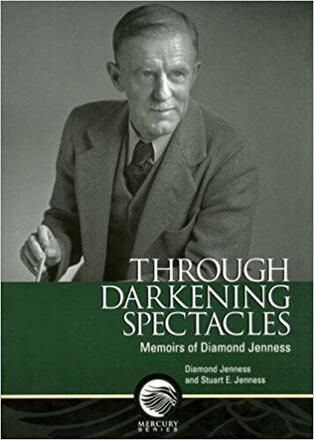
Through Darkening Spectacles
Memoirs of Diamond Jenness
Description
Diamond Jenness was one of the most outstanding Canadian anthropologists of the early twentieth century. Now, details about the private life of this dedicated scholar are revealed in his own words augmented with contributions by his son, Stuart.
In 1926 New Zealander Diamond Jenness was appointed Chief of Anthropology at the National Museum of Canada. For the next twenty-two years he sought to expand the Museum? exhibits, anthropological collections, and reputation, and to improve the recognition, understanding, and living conditions of Canada? Native peoples. Almost single-handedly he produced basic publications on Canada? two Aboriginal peoples: five early Canadian Arctic Expedition volumes on the Inuit in Canada? Arctic, and The Indians of Canada. His People of the Twilight has been described as ?he best single book on the traditional Canadian Inuit. ?Now, revealed in his own words, augmented with biographical and anecdotal contributions by his son Stuart, are details about the private life and activities of this dedicated scholar, one of Canada? greatest early scientists, Diamond Jenness.
Diamond Jenness (MA, New Zealand, MA, Oxford) spent three years in the Arctic, met his life partner in Ottawa, and served overseas in the First World War. Married upon his return to Canada, he soon established his reputation among anthropologists by his remarkable recognition of the ?orset Culture?in the eastern Canadian Arctic and the ?ld Bering Sea Culture?in northwestern Alaska. During the Second World War he was seconded to the RCAF for intelligence work. In his retirement years he traveled, studied, and wrote in Spain, Italy, Cyprus, Mexico, and Martinique.
Stuart E. Jenness (PhD, Yale) undertook geological studies in eastern Newfoundland during the 1950s, then served as a scientific editor for the Geological Survey of Canada and the National Research Council of Canada. Retired since 1985, he edited Arctic Odyssey: The 1913?916 Arctic Diary of Diamond Jenness, and wrote the prize-winning book The Making of an Explorer: George Hubert Wilkins and the Canadian Arctic Expedition 1913?916.
Reviews
Through Darkening Spectacles leaves us with a much clearer picture of Diamond Jenness the man; the two voices in this book work together to reinforce our sense that Jenness' genuine interest in other human beings, humility, self-deprecating sense of humor, and patiences as he built his relationships with his informants and collaborators all contributed to his success as an anthropologist. .
- Museum Anthropology Review